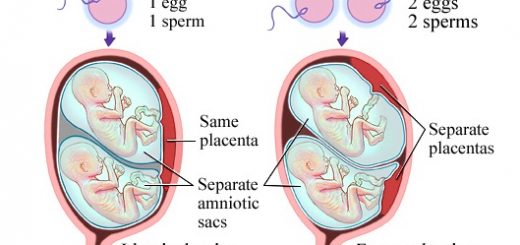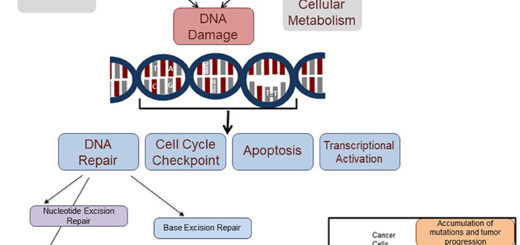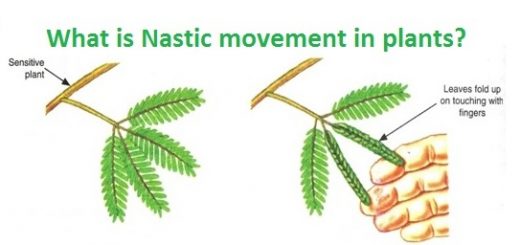Lymphatic system, Blood circulation (Pulmonary circulation, Systemic circulation and Hepatic portal circulation)
The contraction of the right side of the heart occurs at the same time of the left side contraction, Therefore, the pumping of deoxygenated blood from the right ventricle and the pumping of the oxygenated blood from the left ventricle, both take place at the same time, Blood circulation in man is divided into three main pathways which are Pulmonary circulation, Systemic circulation & Hepatic portal circulation.
Pulmonary circulation
It starts from the right ventricle and ends at the left atrium, and it takes place as follows :
- When the right ventricle contracts, the tricuspid valve will close the opening of the right atrium.
- The deoxygenated blood will rush through the pulmonary artery through the three-flapped semilunar value (this valve prevents the back-flow of blood to the right ventricle).
- The pulmonary artery gives rise to two branches, each branch goes to a lung, where it branches to form several arterioles which finally give rise to blood capillaries.
- The blood capillaries spread around the alveoli where the exchange of gases takes place, CO2 and water vapour will diffuse from the blood, and oxygen will move towards it, So, the blood becomes oxygenated.
- The oxygenated blood returns from the lungs through the four pulmonary veins (two veins from each lung) to open into the left atrium.
At the end of the circulation when the left atrium contracts, the blood will pass to the left ventricle through the bicuspid valve.
Systemic circulation
It starts from the left ventricle and ends at the right atrium, as follows:
- When the left ventricle contracts after being filled with oxygenated blood, the mitral valve (bicuspid valve) closes the opening of the left atrium.
- Blood under great pressure will rush from the left ventricle to the aorta through an opening which is controlled by the semilunar valve to prevent the back-flow of blood.
- The aorta gives rise to several arteries, some of them move upward, while the others go downward, Arteries then branch to form smaller and smaller arterioles which end by the blood capillaries.
- These capillaries spread through the tissues in between the cells, transporting oxygen, water, and dissolved food substances to them.
- Products of catabolism such as CO2 ( resulting from the oxidation of fats and sugar ) diffuse through the walls of blood capillaries and reach the blood which changes in the colour from light red to dark red and this blood is called deoxygenated blood.
- The blood capillaries gather to give rise to larger and larger venules & finally to the veins that pour their deoxygenated blood into the superior and inferior venae cavae which carry blood to the right atrium.
At the end of the circulation when the right atrium becomes filled with blood, its walls contract, and the blood is formed to the right ventricle which becomes filled with the deoxygenated blood.
Note: The contraction of the right side of the heart occurs at the same time of the left side contraction, Therefore, the pumping of deoxygenated blood from the right ventricle and the pumping of the oxygenated blood from the left ventricle, both take place at the same time.
Hepatic portal circulation
It starts from the blood capillaries of villi of the small intestine and ends with blood capillaries inside the liver, as follows:
- Glucose and amino acids are transported to the blood capillaries inside the villi of the small intestine after being absorbed by the villi.
- The blood capillaries aggregate into small venules, then large venules & finally they pour their contents into the hepatic portal vein, This also receives the veins from the spleen, pancreas and stomach.
- The hepatic portal vein branches into venules ( when it first enters the liver ) which end with a minute of blood capillaries, Excess food substances that exceed the body needs are filtered through the capillary walls and passed to the liver, where they undergo certain changes.
- The blood capillaries unite into the hepatic vein which leaves the liver to pour its contents into the upper part of the inferior vena cava before it enters the right atrium.
There is a fourth blood circulation that is called the cardiac circulation which includes the movement or flow of blood inside the four chambers of the heart according to the contraction and relaxation of heart.
Lymphatic system
The lymphatic system is considered as the immune system of body, due to its ability of defense and production of antibodies that give the body its immunity, The spleen is considered one of the most important lymphatic organs in the body, The lymphatic system consists of :
Lymph: It is a fluid filtered from the blood plasma during its passing through the blood capillaries, It contains nearly most of the plasma constituents, in addition to a large number of leucocytes.
Lymphatic capillaries (vessels): They work to collect the lymph into the circulatory system through the superior vena cava.
Lymphatic nodes: They are found at certain points along the lymphatic vessels, Lymph passes through the lymphatic nodes to trap the microbes by the white blood cells produced by them.
Lymphatic system structure, Function of Thymus, Vascular supply, and blood-thymus barrier
Functions of Lymphatic system, Structure of Lymph nodes, Spleen and Tonsils
Blood pressure, structure, functions and Mechanism of blood clotting
Human Transport System, Structure of human circulatory system ( heart, blood vessels and blood )
Role of the respiratory system in the excretion process in man and Respiration in plant



